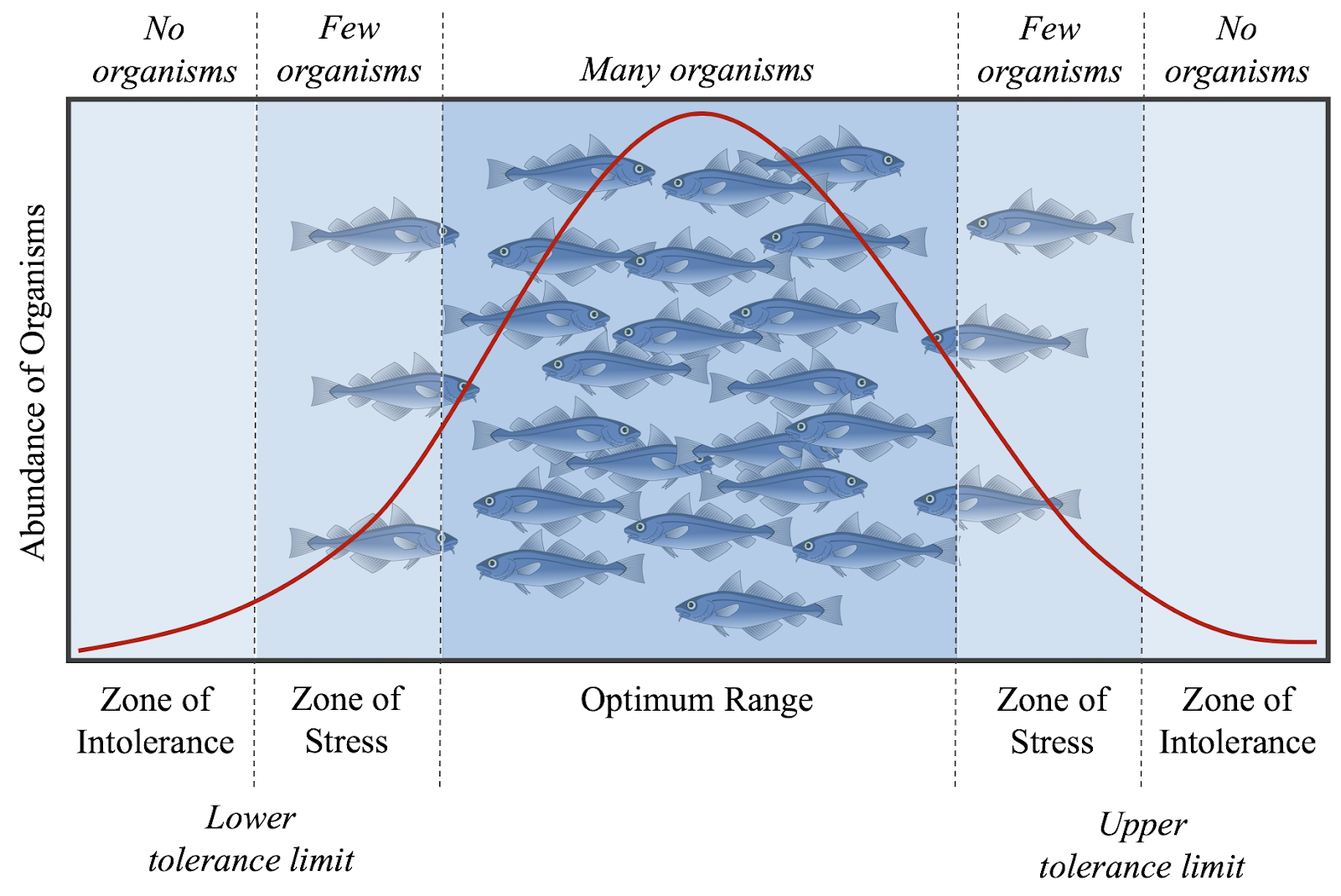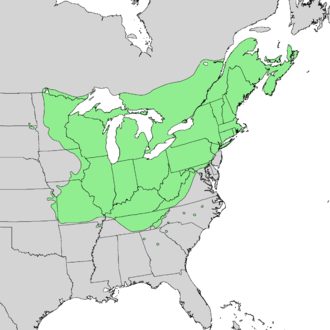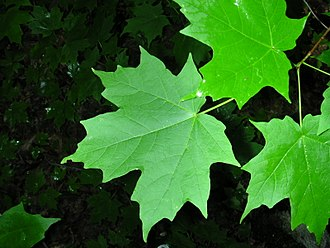5.1: Tolerance Ranges of Species
- Page ID
- 103325
Tolerance Ranges of Species
Each species within a community exploits the environment and interacts with other species in a particular manner. Ecologists use the word niche to describe the role of a species in its community, which can also be viewed as its “occupation” or livelihood. Some niches are relatively narrow and specialized, as is the niche of bats that feed only on flying insects of a certain size, or wasps that pollinate only one or a few species of plants. Other niches, however, are much broader, such as those of bears and humans, both of which forage over an extremely broad range and affect their ecosystem in diverse ways.
The fundamental niche is determined by the range of a species’ tolerance of environmental conditions. Many different physical, abiotic (non- living) factors influence where species live, including temperature, humidity, soil chemistry, pH, salinity and oxygen levels. For each species, there is a set of environmental conditions within which it can best survive and reproduce. It is under these conditions that the species is best adapted.
Ecologists are interested in studying and understanding tolerance ranges of different species for different environments. If you draw a graph of how many individuals in a population live under which part of the range of any given factor, you almost always get a bell-shaped curve. For example, consider a species of fish living in the ocean (Figure \(\PageIndex{1}\)).

This species has certain physiological tolerances in temperature, salinity, etc, that determine where the species can exist. Each of the abiotic factors has an optimum range, where the species will be abundant. Outside of this optimum range (both above and below it), are zones of stress, where the species can survive, but experiences physiological stress and will be less common than in the optimum range. Beyond the zones of stress, are zones of intolerance, which represent conditions the species cannot tolerate and in which it will not be found.
Each and every species is able to exist and reproduce successfully only within a definite range of environmental conditions. If a habitat is unsuitable, then a particular species will not be able to use it even if it is capable of dispersing to the site. Take for example the sugar maple, a species of flowering plant native to the hardwood forests of eastern Canada and eastern United States. The Sugar maple cannot tolerate average monthly high temperatures above 24–27 °C or winter temperatures below −18 °C. The western limit is determined by dryness, and this coincides with the western limits of forest vegetation in general (Figure \(\PageIndex{2}\)).


The tolerance ranges for all relevant abiotic conditions represent the species fundamental niche (Figure \(\PageIndex{3}\)). However, species interactions (such as predation, parasitism, mutualisms, etc) may result in a species not being found throughout its entire fundamental niche. For example, if this fish’s prey species do not occur in some areas of the fundamental niche, then this fish species may not occur there even though it could physiologically tolerate these conditions. The realized niche reflects the range of environmental conditions that a species actually manages to exploit in nature. The realized niche is smaller than the fundamental niche because all species are to some degree constrained by biological interactions such as competition, predation, and disease.

The preferences and needs for certain types of conditions greatly influence the distribution of species around the planet, and it can get fairly complex when you consider that multiple abiotic and biotic factors are simultaneously influencing any given individual and species.
Attribution
This page is a modified derivative of:
- Shelford’s law of tolerance by Wikipedia, license CC BY-SA 3.0
- Acer saccharum by Wikipedia, license CC BY-SA 3.0
- Ch 9 - Ecology: From Individuals to the Biosphere by Open Library, license CC-BY-NC 4.0
References:
Godman, Richard M.; Yawney, Harry W.; Tubbs, Carl H. (1990). "Acer saccharum". In Burns, Russell M.; Honkala, Barbara H. (eds.). Hardwoods. Silvics of North America. Washington, D.C.: United States Forest Service (USFS), United States Department of Agriculture (USDA). Vol. 2 – via Southern Research Station.

